2024 June 29 morning
Aziza Cooper sends a photograph of a Golden Jewel Beetle from her home in Saanich yesterday June 28.
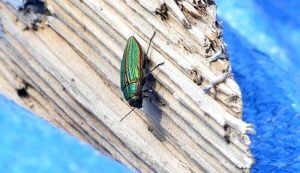 Golden Jewel Beetle Buprestis aurulenta (Col.: Buprestidae) Aziza Cooper
Golden Jewel Beetle Buprestis aurulenta (Col.: Buprestidae) Aziza Cooper
Marie O’Shaughnessy sends photographs of a Red Admiral from Mount Tolmie yesterday June 28 – the same one that Jeremy Tatum reported from there in yesterday’s posting.
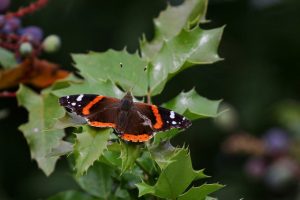 Red Admiral Vanessa atalanta (Lep.: Nymphalidae) Marie O’Shaughnessy
Red Admiral Vanessa atalanta (Lep.: Nymphalidae) Marie O’Shaughnessy
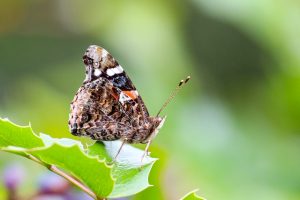 Red Admiral Vanessa atalanta (Lep.: Nymphalidae) Marie O’Shaughnessy
Red Admiral Vanessa atalanta (Lep.: Nymphalidae) Marie O’Shaughnessy
Jeremy Tatum writes: I am happy that Marie refers in correspondence to the underside of the wings shown in the photograph, not, as we sometimes see, the “ventral” side. This not a ventral view of the butterfly – it is a lateral view. The words “dorsal” (from above – dorsum meaning “back”), “ventral” (from below, venter meaning belly) and “lateral” (from the side – latus meaning side) should be used to describe the view of the body of the insect. For the wings, the words “upperside”and “underside” are appropriate.
A butterfly or moth has two pairs of wings – forewings and hindwings. The hindwings are sometimes called the “underwings” – but this can be, and often is, misunderstood to mean “underside”, so it is best avoided. We see in the above photograph of the lateral view of the butterfly, the underside of a hindwing, and part of the underside of a forewing.
Marie photographed this ladybird larva in the Martindale area, June 28:
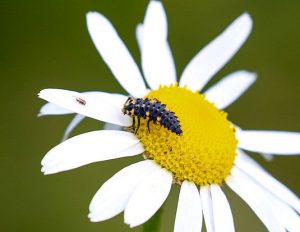 Seven-spotted Ladybird Coccinella septempunctata (Col.: Coccinellidae)
Seven-spotted Ladybird Coccinella septempunctata (Col.: Coccinellidae)
Marie O’Shaughnessy
Also on June 28, she photographed these dragon- and damselflies at the McIntyre reservoir.
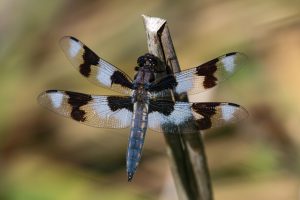 Eight-spotted Skimmer Libellula forensis (Odo.: Libellulidae) Marie O’Shaughnessy
Eight-spotted Skimmer Libellula forensis (Odo.: Libellulidae) Marie O’Shaughnessy
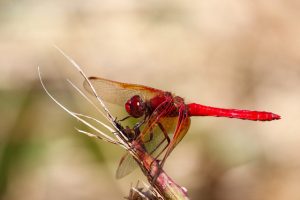
Cardinal Meadowhawk Sympetrum illotum (Odo.: Libellulidae) Marie O’Shaughnessy
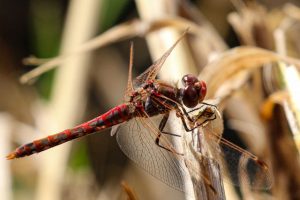 Variegated Meadowhawk Sympetrum corruptum (Odo.: Libellulidae) Marie O’Shaughnessy
Variegated Meadowhawk Sympetrum corruptum (Odo.: Libellulidae) Marie O’Shaughnessy
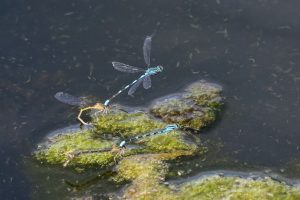 Tule Bluets Enallagma carunculatum (Odo.: Coenagrionidae) Marie O’Shaughnessy
Tule Bluets Enallagma carunculatum (Odo.: Coenagrionidae) Marie O’Shaughnessy
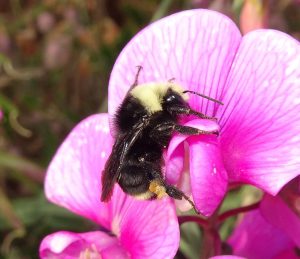 Bombus vosnesenskii (Hym.: Apidae) Ian Cooper
Bombus vosnesenskii (Hym.: Apidae) Ian Cooper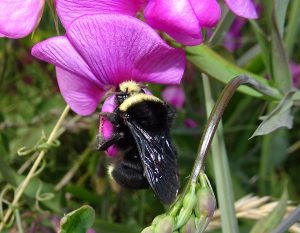 Bombus vosnesenskii (Hym.: Apidae) Ian Cooper
Bombus vosnesenskii (Hym.: Apidae) Ian Cooper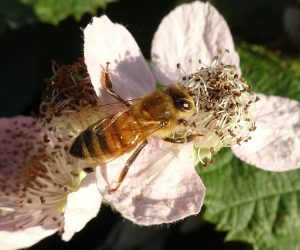 Honey Bee Apis mellifera (Hym.: Apidae) Ian Cooper
Honey Bee Apis mellifera (Hym.: Apidae) Ian Cooper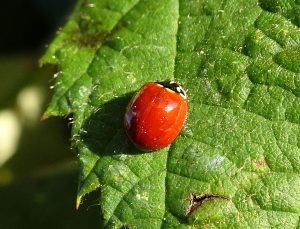 Western Blood-red Lady Beetle – Cycloneda polita (Col.: Coccinellidae) Ian Cooper
Western Blood-red Lady Beetle – Cycloneda polita (Col.: Coccinellidae) Ian Cooper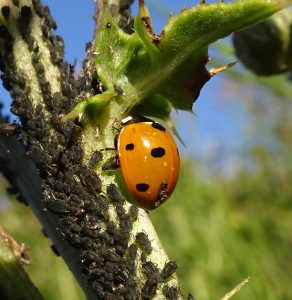 Seven-spotted Lady Beetle – Coccinella septempunctata (Col.: Coccinellidae)
Seven-spotted Lady Beetle – Coccinella septempunctata (Col.: Coccinellidae)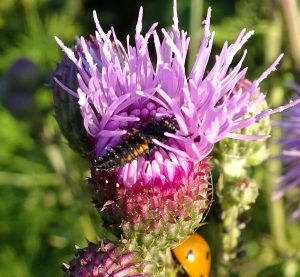 Larva of an Asian Ladybeetle – Harmonia axyridis (Col.: Coccinellidae) Ian Cooper
Larva of an Asian Ladybeetle – Harmonia axyridis (Col.: Coccinellidae) Ian Cooper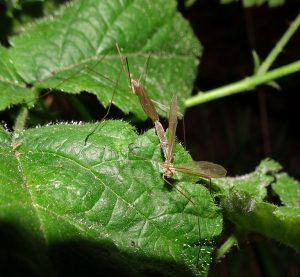 Crane flies (Dip.: Tipulidae) Ian Cooper
Crane flies (Dip.: Tipulidae) Ian Cooper
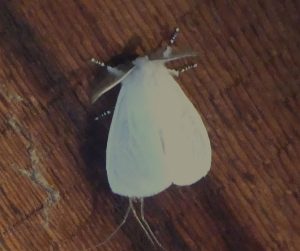 Male Leucoma salicis (Lep.: Erebidae – Lymantriinae) Jochen Möhr
Male Leucoma salicis (Lep.: Erebidae – Lymantriinae) Jochen Möhr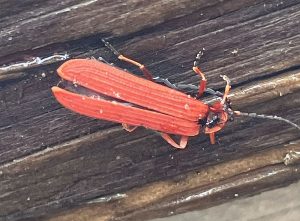 Dictyoptera simplicipes (Col.: Lycidae) Scott Gilmore
Dictyoptera simplicipes (Col.: Lycidae) Scott Gilmore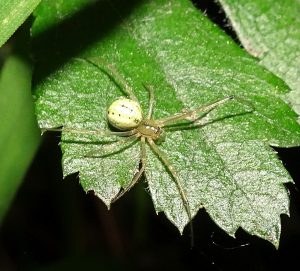 Enoplognatha ovata (Ara.: Theridiidae) Ian Cooper
Enoplognatha ovata (Ara.: Theridiidae) Ian Cooper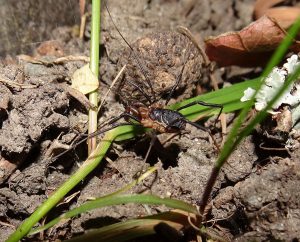 Protolophus niger (Opiliones: Protolophidae) Ian Cooper
Protolophus niger (Opiliones: Protolophidae) Ian Cooper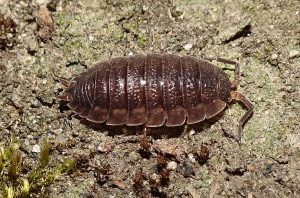 Common Rough Woodlouse – Porcellio scaber (Isopoda: Porcellionidae) Ian Cooper
Common Rough Woodlouse – Porcellio scaber (Isopoda: Porcellionidae) Ian Cooper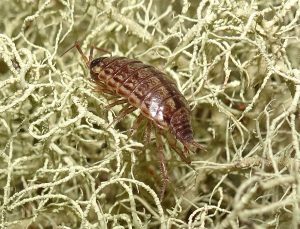 Common Striped Woodlouse – Philoscia muscorum (Isopoda: Oniscidae) Ian Cooper
Common Striped Woodlouse – Philoscia muscorum (Isopoda: Oniscidae) Ian Cooper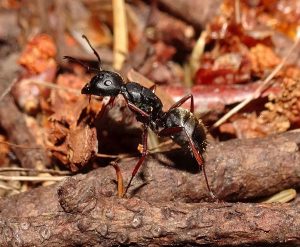 Western Black Carpenter Ant Camponotus modoc (Hym.: Formicidae) Ian Cooper
Western Black Carpenter Ant Camponotus modoc (Hym.: Formicidae) Ian Cooper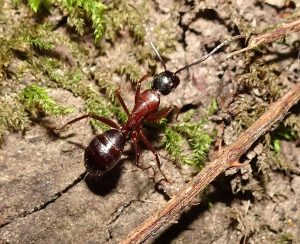 Red Carpenter Ant – Camponotus vicinus (Hym.: Formicidae) Ian Cooper
Red Carpenter Ant – Camponotus vicinus (Hym.: Formicidae) Ian Cooper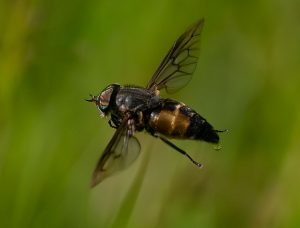 Hybomitra sp. (Dip.: Tabanidae) Gordon Hart
Hybomitra sp. (Dip.: Tabanidae) Gordon Hart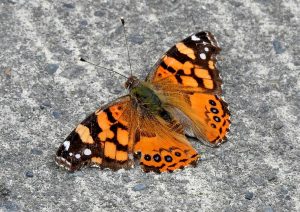 West Coast Lady Vanessa annabella (Lep.: Nymphalidae) Val George
West Coast Lady Vanessa annabella (Lep.: Nymphalidae) Val George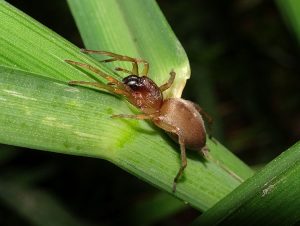 Probably Clubiona sp. (Ara.: Clubionidae) Ian Cooper
Probably Clubiona sp. (Ara.: Clubionidae) Ian Cooper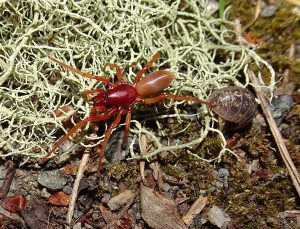 *Woodlouse Hunter Spider – Dysdera crocata (Ara.: Dysderidae) Ian Cooper
*Woodlouse Hunter Spider – Dysdera crocata (Ara.: Dysderidae) Ian Cooper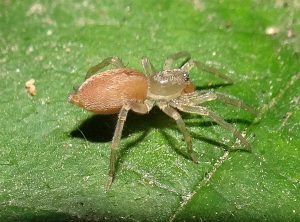 Juvenile Clubiona lutescens (Ara.: Clubionidae) Ian Cooper
Juvenile Clubiona lutescens (Ara.: Clubionidae) Ian Cooper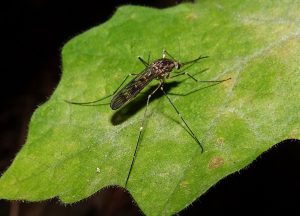 #Mosquito – Culiseta incidens (Dip.: Culicidae) Ian Cooper
#Mosquito – Culiseta incidens (Dip.: Culicidae) Ian Cooper Golden Jewel Beetle Buprestis aurulenta (Col.: Buprestidae) Aziza Cooper
Golden Jewel Beetle Buprestis aurulenta (Col.: Buprestidae) Aziza Cooper Red Admiral Vanessa atalanta (Lep.: Nymphalidae) Marie O’Shaughnessy
Red Admiral Vanessa atalanta (Lep.: Nymphalidae) Marie O’Shaughnessy Red Admiral Vanessa atalanta (Lep.: Nymphalidae) Marie O’Shaughnessy
Red Admiral Vanessa atalanta (Lep.: Nymphalidae) Marie O’Shaughnessy Seven-spotted Ladybird Coccinella septempunctata (Col.: Coccinellidae)
Seven-spotted Ladybird Coccinella septempunctata (Col.: Coccinellidae) Eight-spotted Skimmer Libellula forensis (Odo.: Libellulidae) Marie O’Shaughnessy
Eight-spotted Skimmer Libellula forensis (Odo.: Libellulidae) Marie O’Shaughnessy
 Variegated Meadowhawk Sympetrum corruptum (Odo.: Libellulidae) Marie O’Shaughnessy
Variegated Meadowhawk Sympetrum corruptum (Odo.: Libellulidae) Marie O’Shaughnessy Tule Bluets Enallagma carunculatum (Odo.: Coenagrionidae) Marie O’Shaughnessy
Tule Bluets Enallagma carunculatum (Odo.: Coenagrionidae) Marie O’Shaughnessy